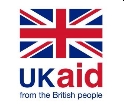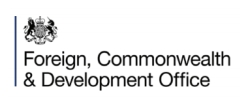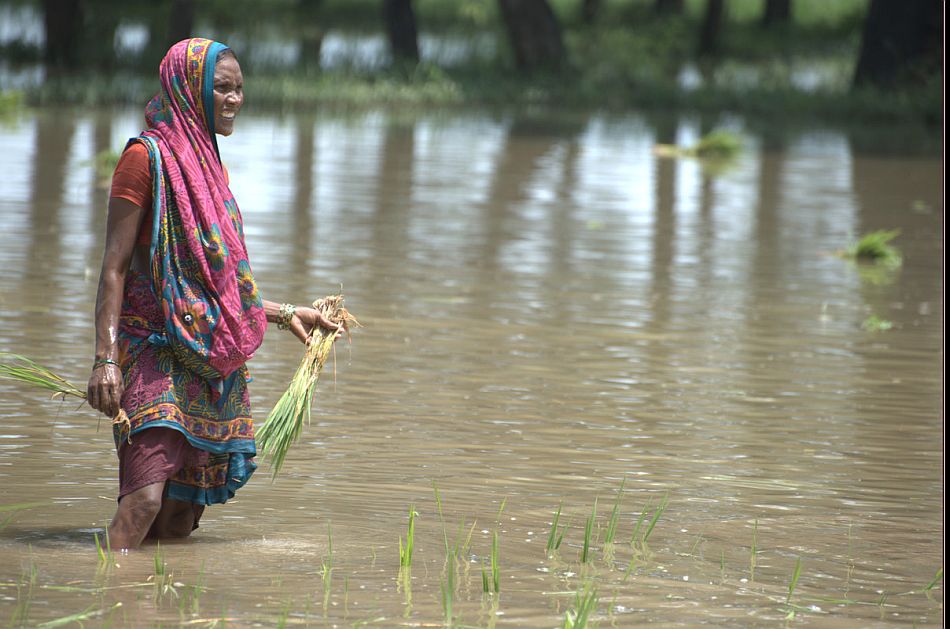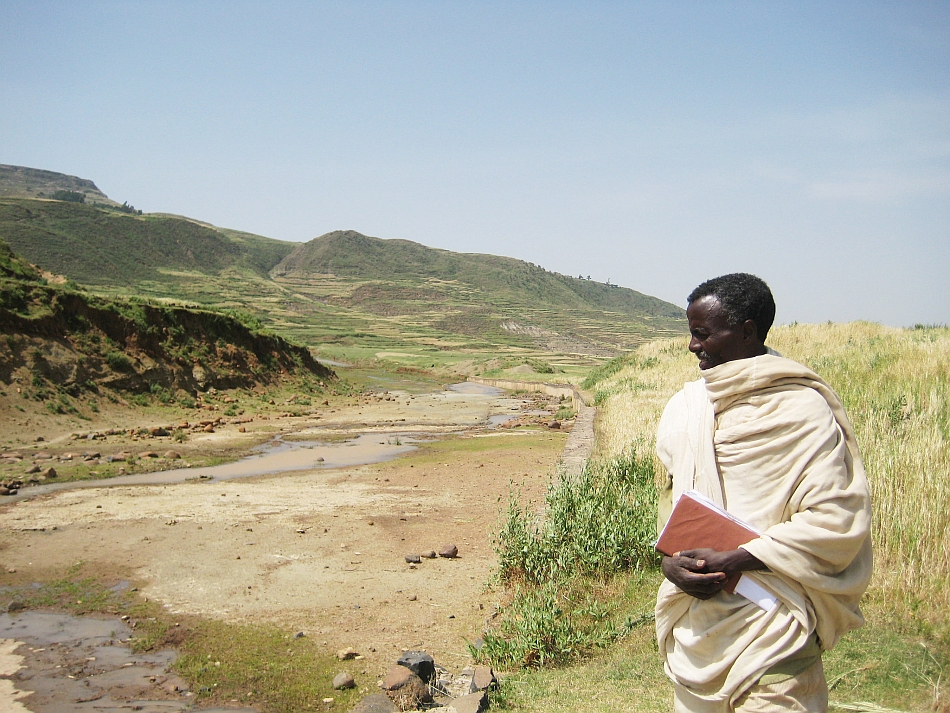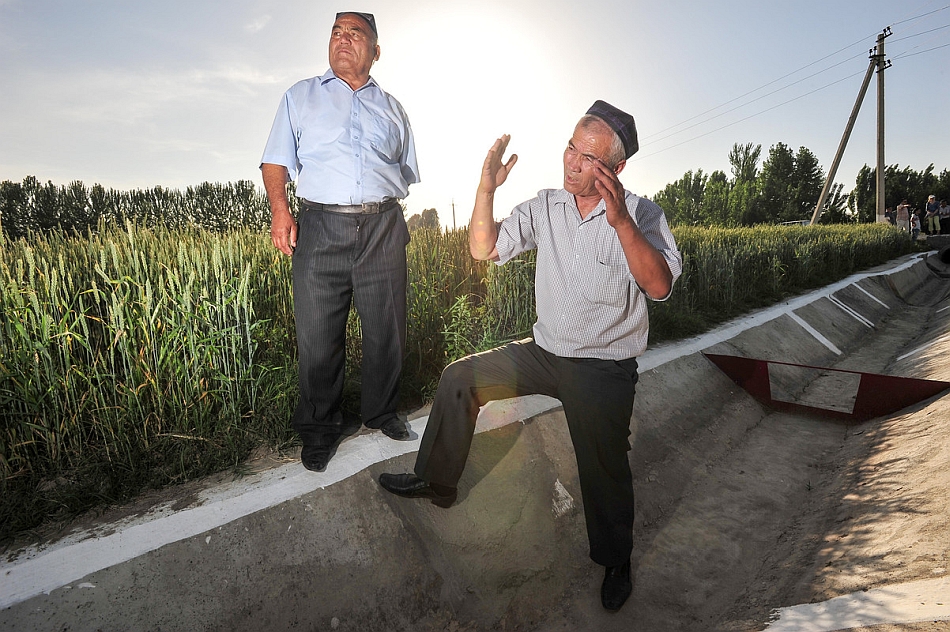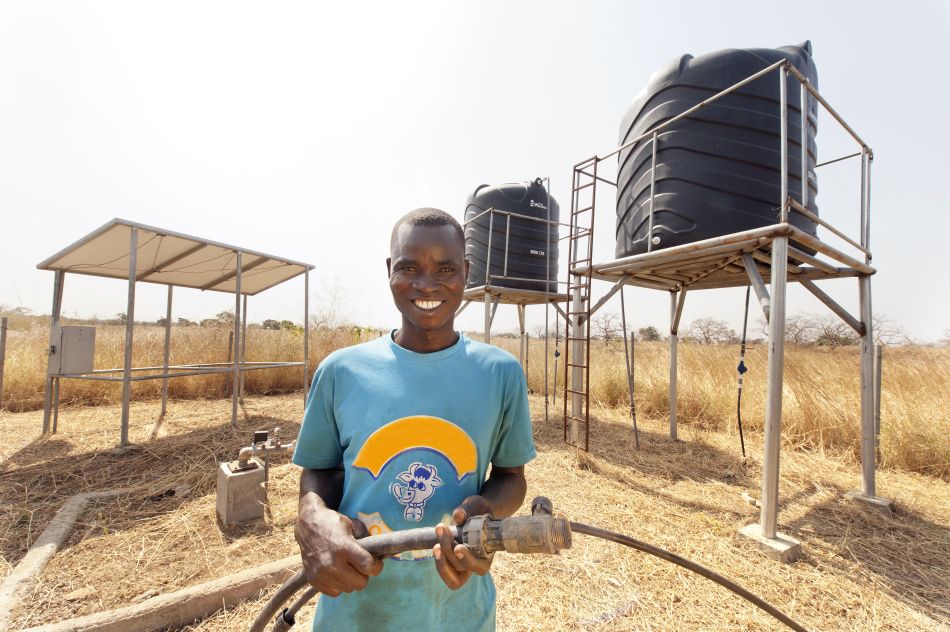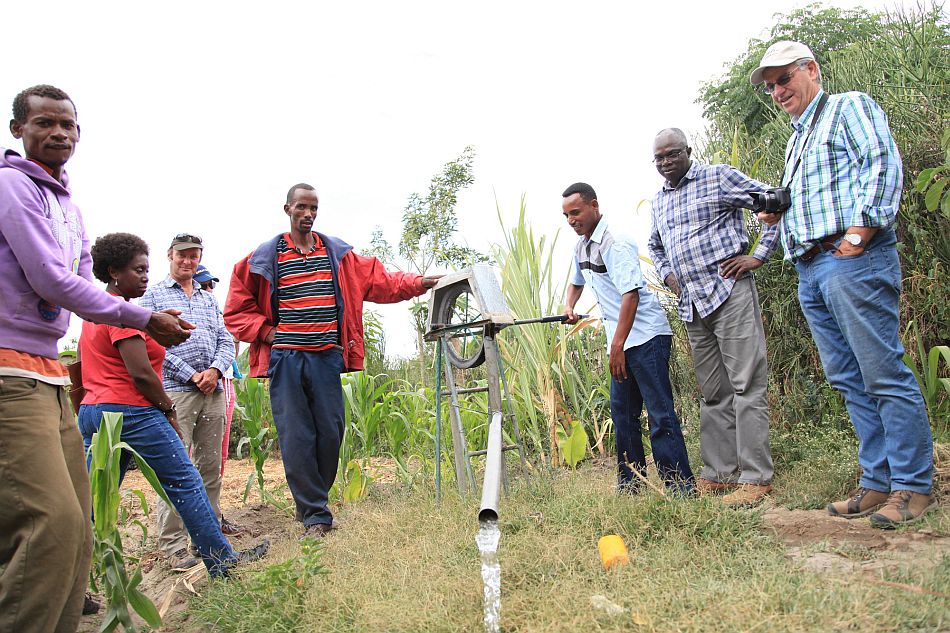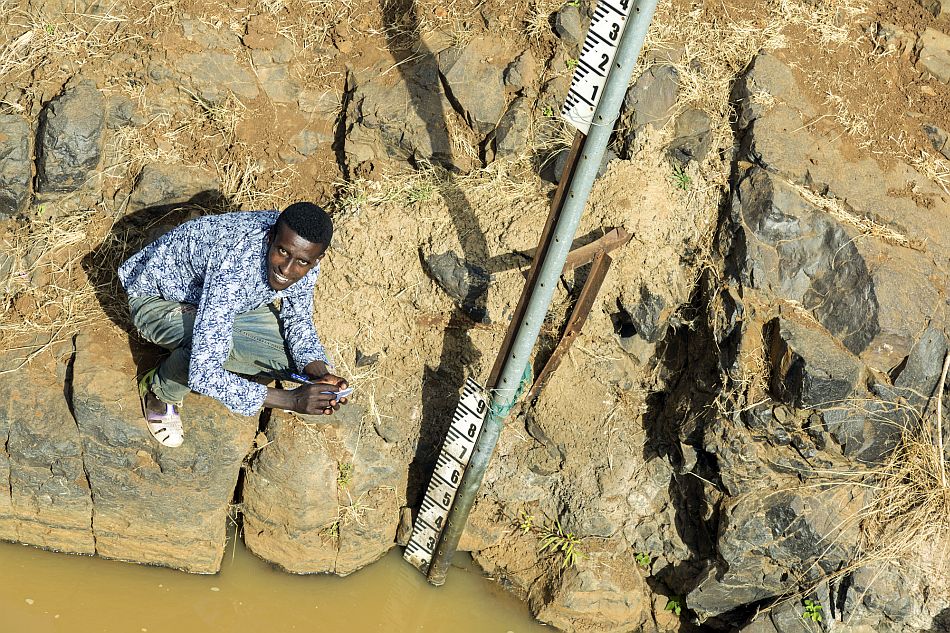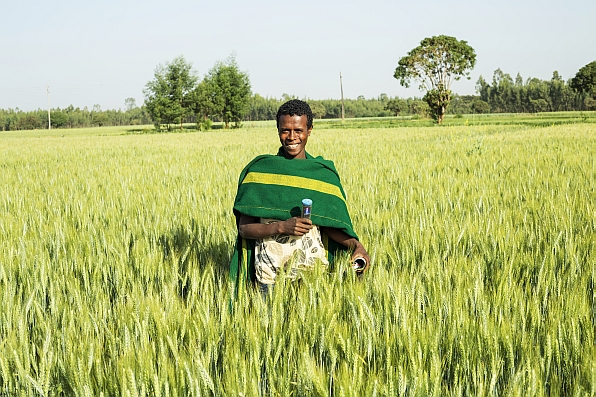Likimyelesh Nigussie, Research Officer, IWMI and Alemseged Tamiru Haile, Researcher – Hydrology/Hydrological Modeling, IWMI
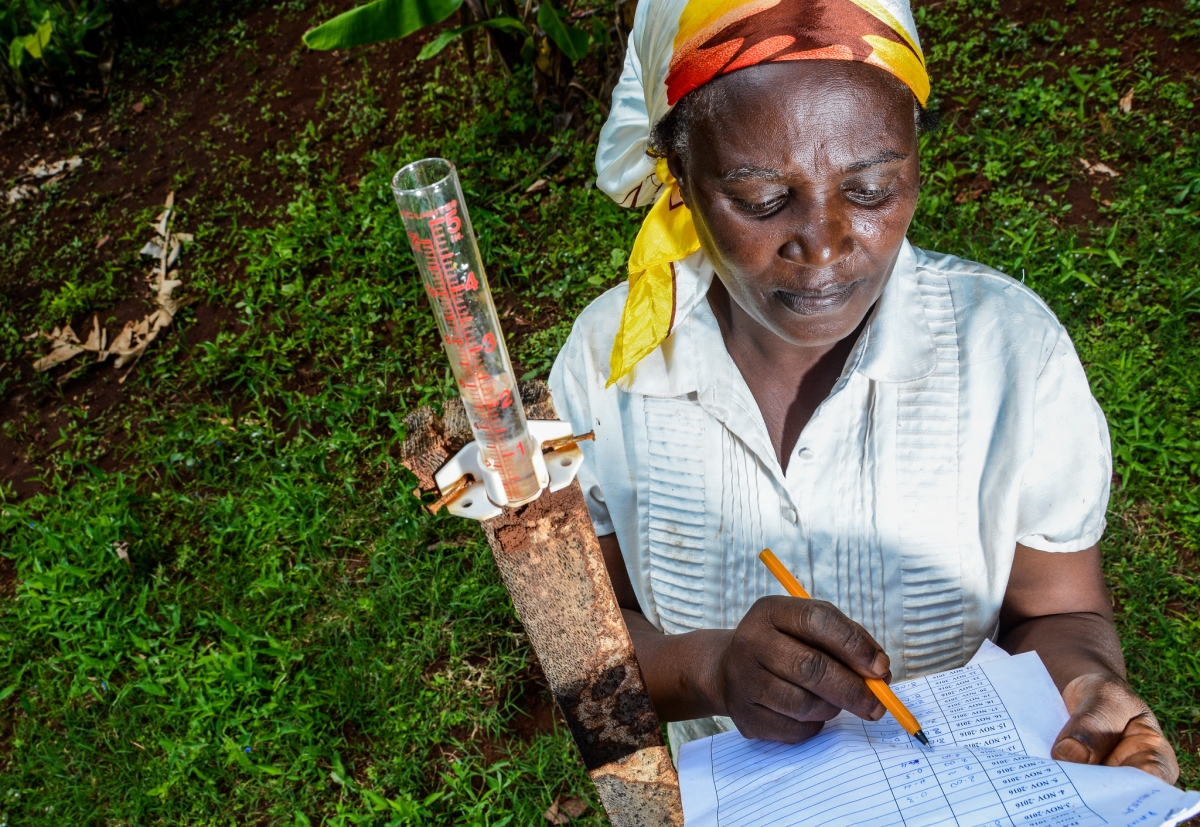
Agriculture is the mainstay of Ethiopia’s economy, contributing 37% of gross domestic product (GDP). Growth of the sector depends on efficient and sustainable use of natural resources such as water and land. But, land resources in Ethiopia face intense degradation with more than one-quarter of the total land area and nearly one-third of the population affected. While government and donors are investing huge amounts on sustainable land management, the benefits of these interventions on improving water resources remain unknown.
Ethiopia’s Basin Development Authority (BDA) is responsible for collecting, processing, analyzing, and disseminating hydrological data. By the end of 2018, the number of operational hydrological stations owned by BDA was 490, of which about 50 stations were telemetric – meaning that data are gathered remotely. However, hydrological data in Ethiopia has issues of coverage, quality, and continuity. Due to the high cost of establishing and maintaining network stations, the monitoring of water resources in Ethiopia tends to focus on large river basins (> 1,000 km2) with little or no consideration of small watersheds (< 100 km2). This leaves a large data gap on the small rivers which are critical for supplying the agricultural sector. Data from small rivers can inform the development of small and micro scale irrigation development and help to measure the impacts of watershed development interventions.
Data from manual network stations are often subject to quality issues, sometimes related to poor maintenance. This is exacerbated by a lack of appropriate institutional arrangements that facilitate community participation and govern data collection. Thus, a current priority for BDA is to improve the management of existing stations and the governance system rather than to increase the number of stations.
IWMI conducted a qualitative study to investigate the possibilities of embedding a citizen science approach into existing data collection systems to address these data gaps.
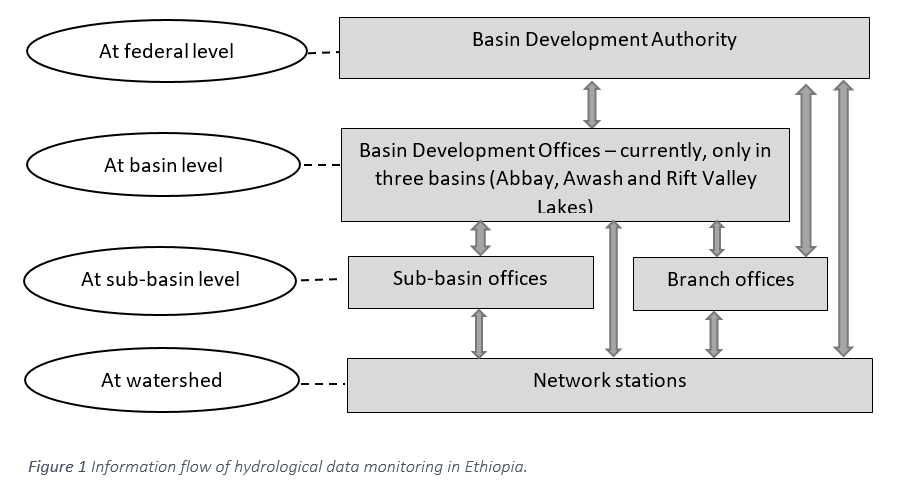
Community-based participatory approaches are not new to Ethiopia. They have been practiced in the country for the purpose of natural resources management, among other things. Specific to hydrometeorological data monitoring, case studies conducted in Ethiopia demonstrated that a community-based monitoring (CBM) approach or citizen science approach can deliver valuable and reliable hydrologic data in small watersheds. The quality and sustainability of data from CBM however, depends on several factors, such as the motivation and commitment of observers.
Experience from Ethiopia shows demand driven incentives; creating an understanding of how the resource relates to livelihoods and ecosystems; and support from ‘para-hydrologists’ are some of the mechanisms used to enhance quality of the data. Engaging communities in hydrologic monitoring has many benefits. For government, it provides a sustainable and cost-effective alternative to monitoring. For community, it enhances public awareness about the resources they monitor; and instills ownership and acceptance of science and management.
The Water Sector Development Programme of Ethiopia promotes the decentralized management of water resources by supporting the establishment of appropriate institutional frameworks from the regional to the lowest administrative structure. And, despite shortfalls in the data from the BDA, the good news is that Ethiopia’s Ministry of Agriculture (MoA) has a high demand for hydrological data (particularly from small watersheds) and has institutionalized community-based natural resource management structures and platforms from the federal to the local level which can plan, design and implement CBM programmes. In particular, land restoration programmes in Ethiopia (such as the Sustainable Land Management Programme) use such structures that lend themselves to citizen science approaches that can be used for hydrologic data monitoring from small watersheds. Also, the existing memorandum of understanding between MoA and the Ministry of Water, Irrigation, and Energy (MoWIE) for the collection of hydrological data from small rivers in micro-watersheds can be leveraged if the MoA can be delegated for monitoring.
Donors
|
|
|
This work was supported by the Water Security and Sustainable Development Hub funded by UK Research and Innovation (UKRI) through the Global Challenges Research Fund (GCRF) (Grant number: ES/S008179/1). |


